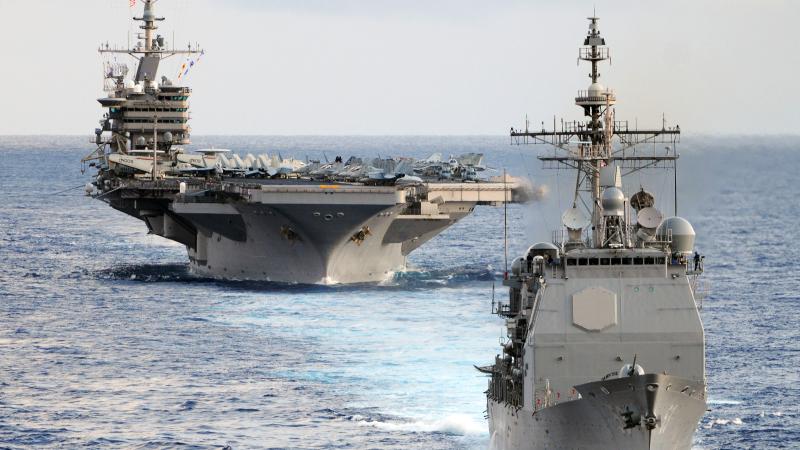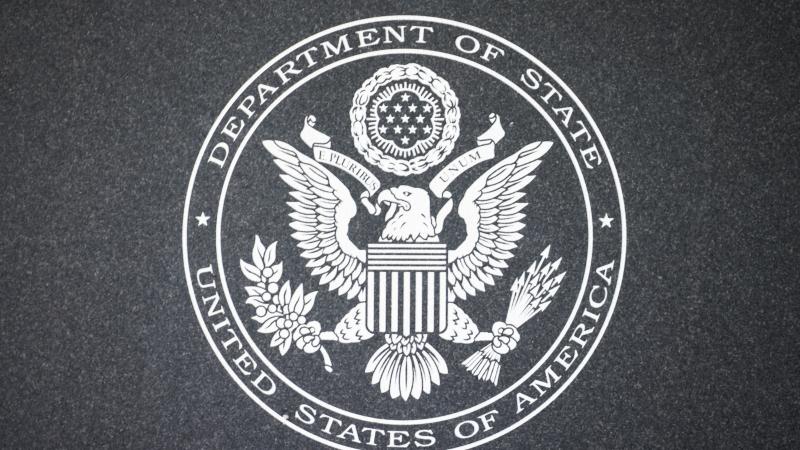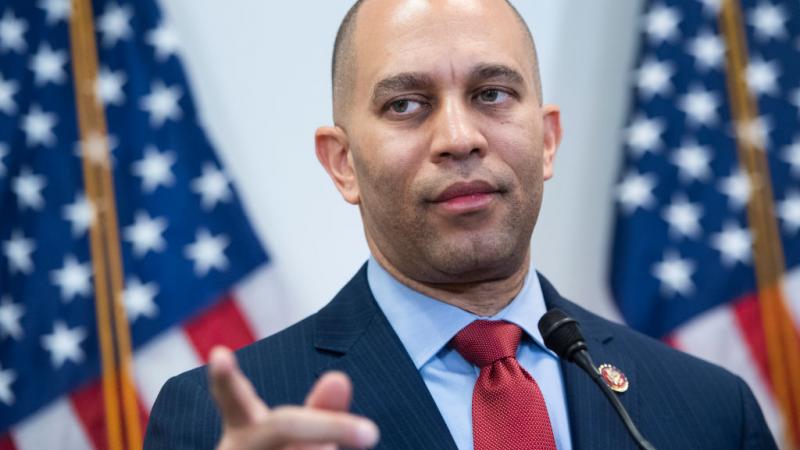Biden depleting weapons supply with Ukraine aid, hurting potential defense of Taiwan: experts
The warning comes as a new report assesses the U.S. military is at "significant risk" of being unable to win a single major regional war.
The Biden administration is giving so much military assistance to Ukraine to combat Russian forces that it's risking not having enough weapons to help defend Taiwan should China invade, according to experts and former top national security officials.
"Our weapons stockpiles are low, in large part because of the war in Ukraine, which means if there's another war, or if we need to provide weapons to Taiwan, those weapons aren't going to be there because these weapons are complicated to make — they're expensive," former National Security Council Chief of Staff Fred Fleitz told the John Solomon Reports podcast on Friday.
"My guess is the Biden administration has put no priority whatsoever into weapons production, and there's going to be a severe shortfall," added Fleitz, a former CIA analyst. "It's a dangerous situation."
Former Trump administration National Security Advisor Robert O'Brien issued a similar warning on Fox News this week.
"We need to replenish the stocks of everything that we've sent to Ukraine," he said. "We're low on missiles. We're low on Javelins. We're low on Stingers. We can't supply them to Taiwan now."
The U.S. has committed some 8,500 Javelin antitank missiles and over 1,400 Stinger antiaircraft missiles to Ukraine, according to the Defense Department.
In May, when the U.S. had sent only 5,000 Javelins and the 1,400 Stingers to Ukraine, lawmakers expressed concern that those figures amounted to one-third and one-quarter of the existing U.S. supply, respectively.
The Defense Department is working to restock, turning to industry to boost production. On Capitol Hill, the House version of the annual defense bill that sets the Pentagon's spending and policy priorities for the next fiscal year authorizes contracts to procure up to 25,000 Javelins and 20,000 Stingers.
However, ramping up or, in some cases, restarting production to replenish U.S. stockpiles will take years, according to analysts. Delays due to lack of available parts and other issues further complicate the situation.
Pentagon budget documents show that during fiscal years 2020-2022, the average rate of Defense Department procurement of the Javelin was about 675 annually. At that rate, it would take over 12 years to restock the 8,500 Javelins sent to Ukraine.
According to Mark Cancian of the Center for Strategic and International Studies, the current production rate of Javelins is about 1,000 a year.
Whatever the exact rate, "it will be many years before the inventory is fully replenished," even with the Pentagon working to increase it, wrote Cancian.
Beyond Ukraine, the U.S. is also trying to fulfill Taiwan's orders for Stingers and Javelins, weapons that Taiwanese officials deem essential to combat a potential Chinese invasion.
"Taiwan needs to have something tangible, such as a homeland defense force," Adm. Lee Hsi-ming, Taiwan's former defense chief, said in a recent interview. "If these small-scale troops are all over Taiwan and are equipped with weapons like Stingers, Javelins and grenades, Taiwan can demonstrate its social toughness and resilience."
China considers Taiwan, a nearby island run by a democratic government, as a renegade Chinese province that must be reunited with the mainland — by force, if necessary.
Lawmakers have been expressing concerns about aid to Ukraine undermining a potential U.S. defense of Taiwan, which maintains strong economic ties and defense cooperation with Washington.
"We're running low on the munitions that are essential to both Ukraine and Taiwan," Rep. Mike Gallagher (R-Wisc.), a member of the House Armed Services Committee, said at a Heritage Foundation event this week. "Two months into the war [with Russia] we had already sent Ukraine a quarter of our entire Stinger stockpile and more than seven years' worth of Javelins."
Noting it could take at least a couple years to sufficiently boost production, Gallagher said, "In many cases Chinese companies are the sole source or a primary supplier for the energetic materials used in our missiles."
He said that when it comes to Taiwan, time is not on our side. "We have entered the window of maximum danger," he warned.
Chief of Naval Operations Adm. Mike Gilday told the Atlantic Council on Wednesday that the U.S. military must be prepared for the possibility of a Chinese invasion of Taiwan as soon as late this year.
"What we've seen over the past 20 years is that they have delivered on every promise they've made earlier than they said they were going to deliver on it," said Gilday. "When we talk about the 2027 window, in my mind, that has to be a 2022 window or potentially a 2023 window; I can't rule it out."
He was referring to a forecast by retired Adm. Phil Davidson, former chief of U.S. Indo-Pacific Command, who said last year China might seize Taiwan by 2027.
Concern about being able to both arm Ukraine and defend Taiwan seems to epitomize worries raised in the latest version of a major annual assessment of the U.S. military's strength that's read widely by policymakers.
The Heritage Foundation this week unveiled its 2023 Index of U.S. Military Strength, which for the first time rated the U.S. military as "weak" and warned it's at growing risk of "not being able to meet the demands of defending America's vital national interests."
Perhaps most striking, the comprehensive assessment concluded that the current U.S. military force "is at significant risk of not being able to meet the demands of a single major regional conflict" — such as a war with China over Taiwan or with Russia over Eastern Europe — while also attending to various other necessary activities.
One reason why, according to the report's editor, is the U.S. simply can't field a large enough military force.
"Capacity is down to almost half of what it was during the Cold War," Heritage Foundation senior fellow and Marine veteran Dakota Wood told Just the News. "One implication is less ability to field large forces against a major opponent. Another is less ability to keep fighting when suffering losses and casualties.
"It lessens options for commanders and imposes the difficult choice of deciding to get involved to protect a national interest or not. If you do commit, you have a lessened presence everywhere else that can be exploited by another opponent."
Meanwhile, both military equipment and personnel are coming under heavy strain due to a lack of resources.
In the 1980s, for example, the Navy had nearly 600 ships in its fleet and kept about 100, or 17%, deployed at any one time. As of June of this year, the fleet had 298 ships, and 94 of them, or 31.5%, were at sea or deployed — most in the Indo-Pacific.
"With fewer ships carrying an unchanging operational workload, training schedules become shorter and deployments become longer," the report states. "The commanding officer's discretionary time for training and crew familiarization is a precious commodity that is made ever scarcer by the increasing operational demands on fewer ships."
Woods added that Navy personnel and equipment are essentially working twice as hard as they did with a 600-ship fleet, leading to tired crews and more maintenance issues, which pile up, get delayed, and create a backlog.
"Equipment is also very old," said Wood. "Air Force fighters average 32 years of age. Army tanks and armored vehicles were fielded in the 1990s. More than half the Navy's ships are older than 20 years. As major equipment is retired, it isn't being replaced by new equipment at a reasonable rate. So, services are often forced to keep equipment in service well beyond what was planned, which increases cost of maintenance and repair."
As a result, he explained, much of the taxpayer funds allocated by Congress to the Pentagon are going to fix issues that shouldn't be issues in the first place rather than to advance the military's capabilities.
Woods chided the military services themselves, Congress, and the past several administrations for all playing a role that contributed to the military's current state. He specifically called out the Biden administration for proposing defense budgets that underfund the military and don't keep pace with the rate of inflation.
"This is intentional," he said. "Every administration establishes its priorities; the budget reflects those priorities. For the Biden administration, the condition of the military has taken less priority than other things the White House has pushed."
Gallagher echoed that sentiment at a Heritage event unveiling the new report.
"When the administration proposes a budget that's a cut in real terms [accounting for inflation], it kneecaps the Congress," he said.
As the Pentagon struggles with a daunting array of internal challenges, adversaries abroad are investing significantly in their own militaries. Above all, China is emerging as a genuine military competitor to the U.S.
"The United States under Joe Biden is sleepwalking to decline and disaster," Nile Gardiner, a fellow at the Heritage Foundation who previously served under former British Prime Minister Margaret Thatcher, told the "Just the News, No Noise" television show on Thursday. "This is a president who really isn't serious about rebuilding America's military capacity. Our enemies and adversaries are growing theirs, especially the Chinese, and we're seeing an array of dangerous threats to the United States."
The Defense Department didn't respond to a request for comment for this story.















